VS2 Diamond Clarity Rating – The Sweet Spot
Breathtaking engagement rings with VS2 clarity center stones from White Flash.
I love the VS2 clarity grades when it comes to purchasing diamonds. Why? Put simply, they are a safe purchase in terms of clarity and offer superb value for money.
VS2 diamonds represent a Goldilocks zone where inclusions can’t be seen with the naked eyes and they don’t come with a hefty price tag like their internally flawless or VVS counterparts.
In this guide, you will see real life examples of how a VS2 diamond would look like and discover the insights to shopping for eyeclean diamonds. Let’s dive in!
First of All, What Does VS2 Diamond Clarity Mean?
The term VS is an abbreviation for Very Slightly Included. A VS2 clarity grade is defined as having minor inclusions that can range from difficult to somewhat easy to see by a trained professional using 10X magnification.
Without using any magnification aids, you shouldn’t be able to see any flaws or inclusions with your naked eye in the majority of VS2 diamonds.
Below are two examples of VS2 diamonds that have minute inclusions visible only under magnification. I want you to click on both of them and interact with the videos to get a better idea of what they look like.
What Are the Differences Between VS1 & VS2 Diamonds?
The differences between a VS2 and a VS1 diamonds are subtle and very technical. You see, when clarity grading is performed, a number of factors go into deciding which grade a diamond falls into.
In essence, it boils down to the severity of the inclusions and how easily they can be seen under magnification. Generally speaking, the inclusions found in VS2 stones are relatively bigger or in larger quantities than those found in VS1 diamonds.
The location of the flaws also plays a role in the grading process. For example, a cloud inclusion found directly under the table facet is much more noticeable than one that is closer to the edge or buried deep within the diamond’s body.
In reality, it is extremely difficult to tell a VS2 apart from a VS1 diamond without a 10X loupe. Here’s a video comparison to show you how they look like in real life.
From an expert’s perspective, there are no discernible clarity differences between these two engagement rings. In fact, both diamonds display incredible sparkle and look equally stunning.
So, Can You Go Wrong If You Blindly Buy Within This Grade?
While VS2 diamonds are usually eyeclean, there do exist outliers that aren’t and may contain inclusions that are visible to the naked eye. From experience, these outliers are usually larger in carat size (>2ct) or had barely made it past the SI1 grade.
Reading a lab report will only tell you the clarity grade but it won’t tell you whether the diamond is eyeclean. This is why I always stress the importance of magnified photographs/videos and never buying blind.
[subject]Examples of Undesirable Diamonds in the VS2 Grade[/heading]
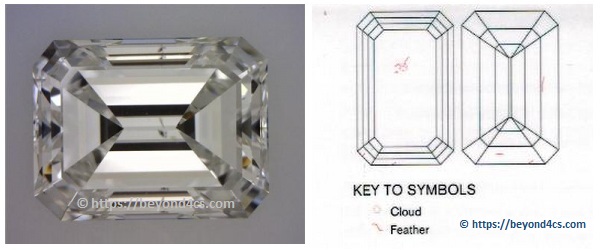
Inclusion plot from GIA report shows a concentration of clouds in the same vicinity.
As you can see above, an eye clean diamond isn’t always guaranteed. Having an eye clean diamond is largely dependent on a few factors: color of the inclusions, cut quality (better light performance helps conceal imperfections) as well as the nature of the flaws.
Here’s another questionable example of a princess cut graded with Very Slightly included clarity. This inclusion may be visible to your naked eye depending on the type of lighting conditions you are in and also the orientation of your eyes to the diamond.
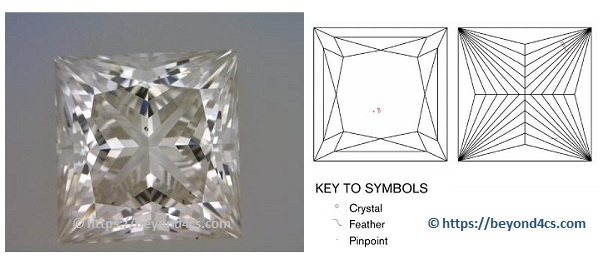
Princess cut with dark crystal inclusions under table facet.
Step Cuts Usually Require More Attention to Clarity Details
With step cuts, it is always prudent to check the diamond with a loupe before you make any purchase. This asscher cut is an example of a stone that you want to avoid due to its prominent crystal inclusion under the table facet.
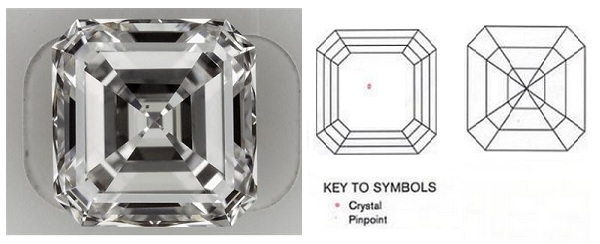
Under the table facet, it is wise to avoid diamonds with big, dark crystal inclusions.
The Bottomline: Is VS2 Clarity Good?
At this point, if you are worried about buying a diamond in the VS2 clarity grade, don’t be. What I had shown you above are exceptions that you don’t normally see. The sole purpose of showing these examples is to highlight the need for better awareness and verification of details.
The fact is, the majority of VS2 diamonds are eyeclean and will have inclusions that look like the examples listed below.
Click these links to view the stones under magnification: princess cut & round cut.
VS2 diamonds offer good quality for budget-friendly prices and they are usually eyeclean. When making a selection, it’s important to view photographs or videos under magnification to see exactly how the diamond looks like.
And when you shop smart at the right places, you can get a beautiful diamond ring that looks fantastic without breaking the bank.
Related Articles
Leave A Comment

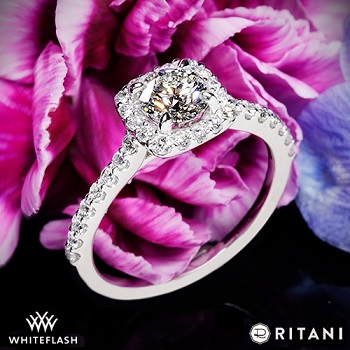
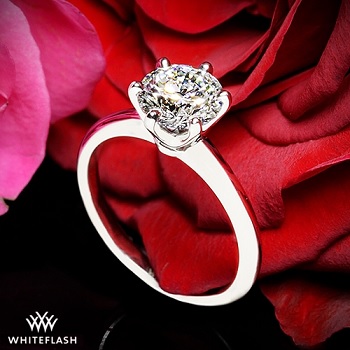
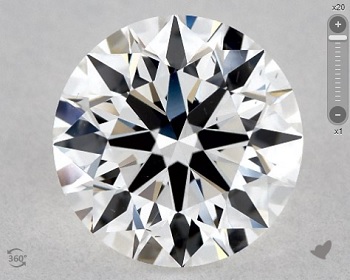
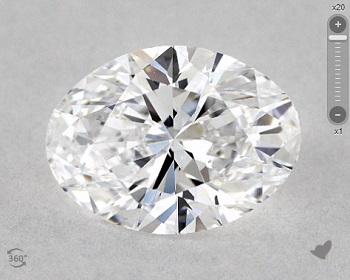
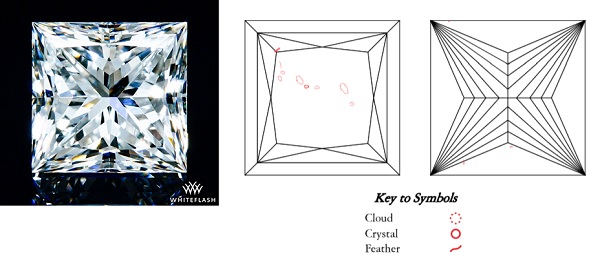
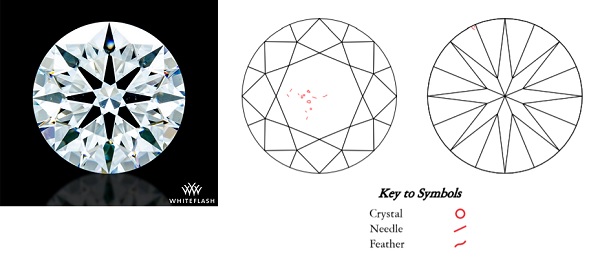

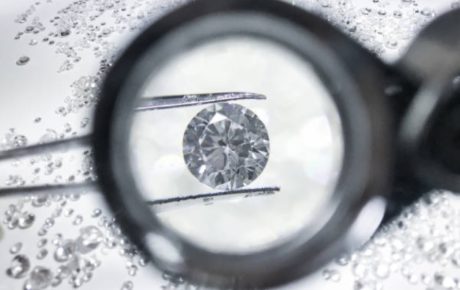
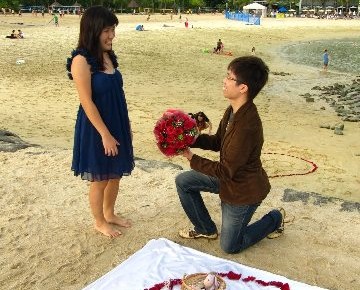
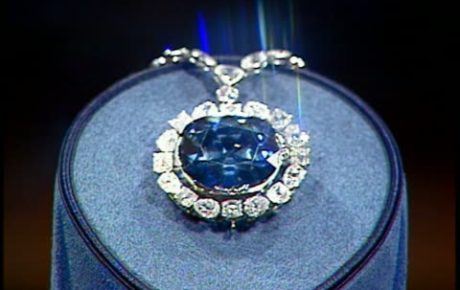









6 Comments
What is a dead step with an Asscher? I bought an Asscher blind from blue nile and I am very happy with it; I was told online that it was a good looking asscher and I had made a good choice. It has a “dead step” which didn’t affect the look of the diamond. (It’s a 1.53, very good cut, VS1 and color G)
Curious what a “dead step” is… Thanks!
Ask the person who told you what a “dead step” is. It’s not a gemmological term. My educated guess is that the particular step facet doesn’t light up no matter how it is turned or rotated.
Many thanks for your quick response.
I very much appreciate your advice and have now read through all of your Beyond 4 Cs posts (which are brilliiant!).
I have now narrowed my search down to the stones below and was hoping that you could take a quick look and let me know your thoughts. I have removed any that do not fit precisely in the “Beyond 4 Cs Ideal Cut Proportions for Round Diamonds guide” (https://beyond4cs.com/shapes/round/ideal-proportions/).
Questions for you:
1. How noticeable is the F vs G colour change?
2. As I am not an expert in reading ASET (and other images) which is preferred here?
3. Which would you say is best “value for money”
4. Are there any other stones out there that you would recommend with similar characteristics / price points?
5. I live in Sydney, Australia – are there any concerns that you would have using White Flash from Australia (warranty, shipping, taxes etc)? Any one else you would consider? High Performance Diamonds, James Allen
I am looking for the stone only and will get it set in Australia. Ultimately I am after the holy grail (highest quality cut, size for lowest price).
Very much appreciate your assistance and let me know if I can repay the favour in any way to you!
The stones I am considering are:
https://www.whiteflash.com/loose-diamonds/compare.aspx?idnos=3988021,3965452,3978038,3986367
1) It is not noticeable to the naked eyes in the face up view even in a side by side comparison.
2) ASET is the easiest to understand. Go to https://beyond4cs.com/2014/12/aset-reference-charts/ for a shortcut. Just compare them to the references I made in that link.
3) Cut quality wise, all 4 stones are on par. I can tell you that these are the 2 best buys:
https://www.whiteflash.com/loose-diamonds/round-cut-loose-diamond-3965452.htm
https://www.whiteflash.com/loose-diamonds/round-cut-loose-diamond-3988021.htm
The first diamond offers the best value for money above. That’s the one I would personally get. If you need to go lower in budget, then go for the 2nd stone.
4) There’s no issue buying from White Flash or James Allen or HPD. Even after taxes are included in, they will be cheaper than like for like diamonds sold in local stores if they even have well cut diamonds to begin with. Most Australian jewelers sell “junk” cut diamonds and Australian readers I’ve help have feedback the same thing (lower prices). I will reiterate, better prices is not the primary reason for going online. Cut quality is. Better prices are just a byproduct of going online.
All 3 are reliable vendors and specialize in different things. White Flash is great for round diamonds. It also depends on the setting you like. All 3 sell very different designs.
5) I recommend you get the setting done at the place you get the ring from. It reduces hassle and makes one jeweler completely responsible of the entire piece. Who are you going to trust with for that diamond? You will need to do the legwork all over again. For the record, I can tell you that the settings made by White Flash and James Allen are top notch.
Sharing the website with people you know who are buying diamond rings would be the best way to “repay” me. When readers do that, it tells me I’m doing something right with the website.
I hope that you have been well! After working with Whiteflash for the last week, I have narrowed stone selection down to three Whiteflash ACA stones (AGS reports attached) https://www.whiteflash.com/loose-diamonds/compare.aspx?idnos=3956080,3988021,3965452:
• 2.064ct H VS2
• 2.060ct G VS2
• 2.258ct G VS2
There were also a couple of other ACA stones available but the star on both was 49 which is outside of your 50-55 range so I have excluded them.
It is quite hard to tell the difference between them without seeing them in person so I was hoping that you could help me decide (albeit I have requested videos from Whiteflash here https://www.youtube.com/watch?v=Q6JpU69Nyoo and here https://www.youtube.com/watch?v=mNNaYmVrLZw). Obviously one is a slightly lower colour (G vs H) and one is a larger size (2.26 vs 2.06 ct), however a couple of questions for you:
1. Which of these would you choose if it were for yourself and why? Which is the best value?
2. Is there anyway to tell if the 2.064 is a strong or weak H? The ASET image for this looks the best of the three to me
3. It looks like the 2.258 has a couple of inclusions (see photo below) – would these noticeable (with natural eye, not under scope)?
Setting:
I have also taken your advice and decided to get the stone set with Whiteflash as well. I have decided on the Vatche U113 setting. Is there anything special that I should be thinking about requesting from them when I get them to do the setting (e.g. are tab vs claw prongs better, stone height, metal etc)? I have read online that I should request 95 Platinum / 5 Ruthernium due to the increased hardness?
Thank you in advance and I look forward to sharing the final product with you!
All 3 diamonds are fantastic options. Their ASET and light performance are all on par and this is what you expect from White Flash. They are consistently great with their ACA selections.
These 2 are the best diamonds to get the best value for money:
https://www.whiteflash.com/loose-diamonds/round-cut-loose-diamond-3956080.htm
https://www.whiteflash.com/loose-diamonds/round-cut-loose-diamond-3965452.htm
And I can confirm that both are eyeclean. There’s no way to tell whether the diamond is a High H or Low H and you are giving yourself unnecessary things to look at. The differences between an H and a G are very subtle. Within a grade itself, the band is extremely narrow. If it were anything less than a H, it would be graded as an I.
Read https://beyond4cs.com/clarity/resize-technique/ then click the 2 links above to check.
Personally, I would go for the G color larger diamond if budget permits. The size upgrade and G color are things I have a preference for. However, if you have a tighter budget, the H diamond is perfect as well. Hits the 2ct mark and faces up white.
As for the setting, the differences in material used are very minute. If 95 Platinum / 5 Ruthernium psychologically gives you better enjoyment, you can try asking for that to be made. I think they might be a small cost involved in doing so.
Setting wise, it is really up to individual preferences. Here’s a recent 0.8 ct (attached file) with flat prongs that a reader purchased to give you an idea how it looks. Obviously, your 2 ct diamond is going to be way bigger.